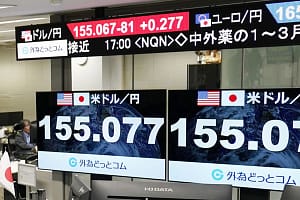Research shows
A strengthening world economy and rising corporate confidence pushed global dividends to a new high in 2017, according to the Janus Henderson Global Dividend Index.
Global dividends rose 7.7 per cent on a headline basis, the fastest rate of growth since 2014, and reached a total of $1.252 trillion. Every region of the world and almost every industry saw an increase.
Moreover, records were broken in 11 of the index’s 41 countries, among them the United States, Japan, Switzerland, Hong Kong, Taiwan, and the Netherlands.
Underlying growth, which adjusts for movements in exchange rates, one-off special dividends and other factors, was an impressive 6.8 per cent, and showed less divergence than in previous years across the different regions of the world, reflecting the broadly based global economic recovery.
The United States has been the key driver of global dividend growth in recent years. After a sluggish 2016, growth picked up markedly in 2017, reaching 5.9 per cent on a headline basis, and 6.3 per cent at the underlying level. US companies paid their shareholders a record $438.1bn. Even so, its performance was a touch below the world average, as other regions accelerated rapidly.
2017 was also a record year for Asia Pacific ex Japan. The total paid jumped 18.8 per cent to $139.9bn, boosted by exceptionally large special dividends in Hong Kong, the largest from China Mobile. Hong Kong, Taiwan, and South Korea all individually broke annual records too. Underlying growth for the region was impressive at 8.6 per cent, led by Taiwan and South Korea which both saw double-digit increases. Australia also saw strong underlying growth of 9.7 per cent.
Japan joined the record breakers, with growth of 11.8% on an underlying basis, after accounting for the weaker yen. Every Japanese sector, and most companies, showed growth in yen terms. Dividends in emerging markets also grew strongly, though they remain a long way below their 2013 peak. Russia saw dramatic growth, while China, which had seen lower payouts two years in a row, avoided a third consecutive disappointment in 2017.
Europe lagged behind other regions, with underlying growth of only 2.7%. In total European companies distributed $227.4bn, a disappointing increase of 1.9% in headline terms. A poor fourth quarter, influenced by cuts from a handful of large companies in France and Spain, a weak euro during the crucial second quarter when most European dividends are paid, and lower special dividends explain why Europe lagged behind its global peers.
For the year overall, France barely grew at all in underlying terms, after an excellent 2016. Germany, by contrast, rebounded in 2017, and numbered among the faster growing nations, along with Austria, Portugal, Belgium, the Netherlands, and Switzerland. The Netherlands and Switzerland even reached new record highs. Spain, by contrast, saw the third consecutive year of declines.






Leave a Comment